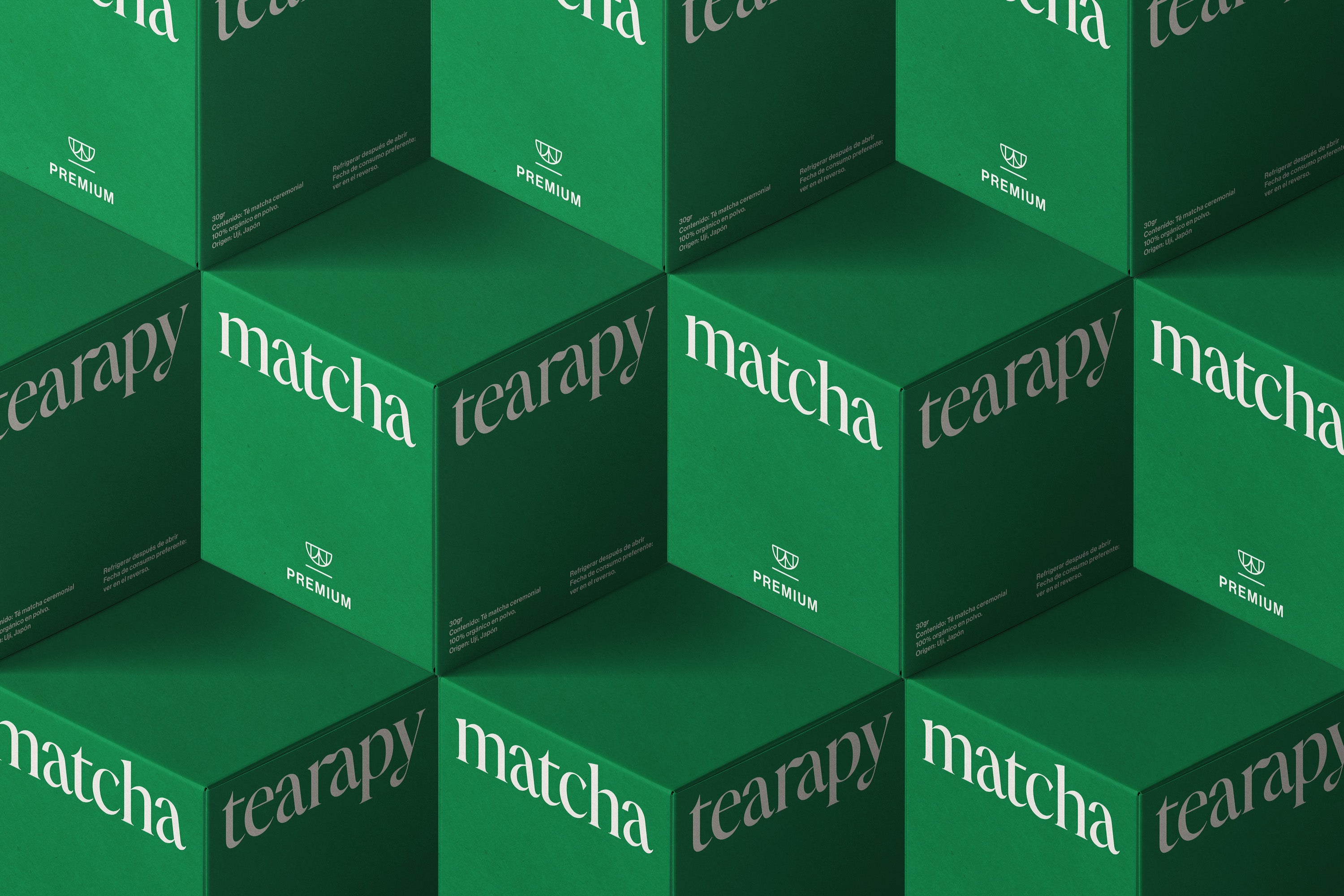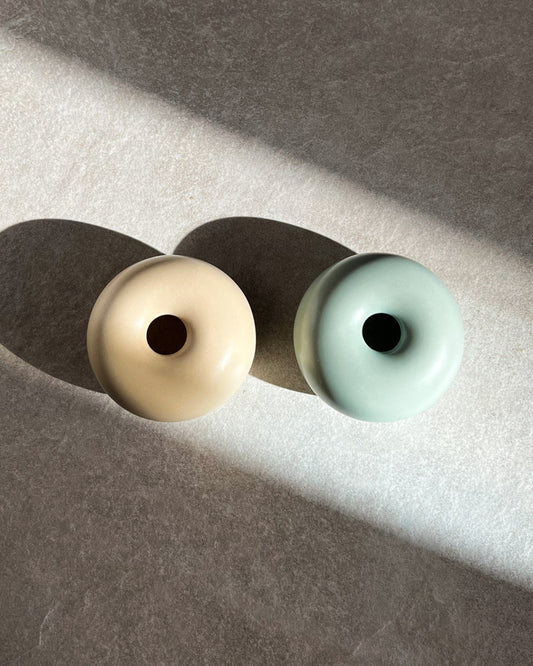Our favorites
-

 Sold out
Sold outMatcha Supreme XMAS EDITION (30g)
Regular price €44,99 EURRegular priceUnit price / per -
Chawan Drop Green
Regular price €25,99 EURRegular priceUnit price / per -
Ceremonial Matcha Starter Set
Regular price €39,99 EURRegular priceUnit price / per€52,97 EURSale price €39,99 EURSale -
Chawan Drop Black
Regular price €25,99 EURRegular priceUnit price / per -
Refined Naoshi (Chasen Support)
Regular price €22,99 EURRegular priceUnit price / per -
Ceremonial Matcha Starter Set
Regular price €59,99 EURRegular priceUnit price / per€81,95 EURSale price €59,99 EURSale -
PREORDER - Premium Hojicha (80G)
Regular price €39,99 EURRegular priceUnit price / per -
Tearapy Glass
Regular price From €19,99 EURRegular priceUnit price / per

Handmade Ceramic Bowl
Our Chawan are handmade in Spain, in a small workshop in Tarragona. Each piece is unique. Choose yours and prepare a good matcha every day, at home. Available in 5 colors.

Premium Ceremonial Matcha
Ceremonial matcha with vibrant color, of the highest quality. Full of antioxidants, perfect for reducing anxiety. Green energy in every sip. Take care of yourself).


How to prepare matcha
Learn how to prepare a perfect matcha at home, following these simple steps...
Benefits of drinking matcha
-

Antioxidants
Matcha is exceptionally rich in catechins, a type of antioxidant that helps fight free radicals in the body.
-

Concentration
Matcha contains L-theanine, an amino acid that promotes relaxation and mental focus.
-

Energy boost
Thanks to its content
caffeine and L-theanine, matcha provides sustained energy over time without causing anxiety peaks.

Collapsible content
Frequently Asked Questions
What is matcha tea and what benefits does it have?
Matcha is a finely ground powder made from green tea leaves. It has a vibrant green color and a mild, particularly umami flavor with a lingering sweetness.
Thanks to its special preparation, a highly concentrated drink is obtained, rich in antioxidants, vitamins and minerals. Matcha contains caffeine and L-theanine, which provides sustained energy over time without the peaks and falls associated with caffeine in other teas or coffees. A 100% natural energy drink.
Why should my matcha be ceremonial grade?
Ceremonial grade matcha is the highest category there is. It is valued for its exceptional quality. It is used in Japanese tea ceremonies and is characterized by its mild flavor, vibrant color and fine texture.
Where should I store matcha tea to maintain its properties?
To maintain the freshness of matcha tea, we recommend storing it in a cool, dark place, preferably in the refrigerator, and always in its original airtight container. It is important to avoid glass containers, as exposure to light could accelerate the oxidation of the matcha, which could negatively affect its qualities and properties.
How many calories are in a cup of matcha tea?
A cup of matcha tea has approximately 3 to 4 calories.
How much sugar does a cup of matcha tea contain?
Matcha Tearapy is 100% pure and contains no added sugar.
How much caffeine is in a cup of matcha tea?
Matcha tea contains less caffeine than coffee, approximately 30-35 mg per cup.
Is matcha tea suitable for lactose intolerant people or does it contain gluten?
Matcha tea is naturally lactose and gluten free, making it suitable for people with lactose or gluten intolerances.
Is matcha suitable for vegans?
Yeah, Matcha is a vegan-friendly option as it is produced exclusively from ground green tea leaves and does not contain any ingredients of animal origin.
Does matcha tea help with weight loss?
Matcha tea can help with weight loss by increasing metabolism and promoting fat burning. However, it is not a miracle solution and it is recommended to combine it with a balanced diet and regular exercise.
How do you describe the taste of matcha tea?
Matcha tea is characterized by its smooth and vegetal flavor, with delicate velvety notes and a light sweetness. It is often described as a balanced drink, with a distinctive umami nuance, which makes it unique.
What are the differences between organic and non-organic matcha?
Matcha Tearapy is organic and grown without the use of pesticides or chemicals, making it a healthier and more environmentally friendly choice, compared to other matchas, which may contain residue from these products. Organic matcha production reflects our commitment to quality and sustainability, providing a safer and more planet-friendly option.
What is the difference between green tea and matcha tea?
Matcha tea and green tea come from the same plant, known as Camellia Sinensis. However, they differ in their cultivation and preparation process. Matcha is grown in a shade environment during the last weeks before harvest, which increases the concentration of chlorophyll and amino acids in the leaves. These leaves are then hand-picked, dried and ground into a fine green powder, resulting in a highly concentrated tea. On the other hand, green tea is made by infusing whole leaves in hot water, resulting in an infusion with a more herbaceous and less concentrated flavor compared to matcha.
How many cups of matcha is recommended to drink per day?
We recommend drinking 1 to 3 cups a day.
What is the best time of day to take it?
You can enjoy it in the morning for an energy boost or in the afternoon as a relaxing concentrate. Avoid consuming it before bed, as caffeine can affect sleep.
Can I drink matcha tea if I am pregnant?
Pregnant women are advised to limit their caffeine consumption, so we recommend not exceeding a maximum of 2 cups of matcha tea per day. Consult your doctor for personalized guidance, as needs and recommendations may vary depending on your specific case.
How to prepare matcha tea?
Matcha tea is prepared by sifting 1-2 grams of matcha, mixing it with hot (not boiling) water and whisking it until well dissolved. Then, you can add it to your favorite drink.
Can I drink matcha hot and cold?
Yes, matcha can be enjoyed both cold and hot.
What should matcha tea be mixed with?
We recommend mixing it with non-dairy milk, water or fresh orange juice to create delicious drinks. It can also be used in cooking recipes, such as ice cream, cookies and savory dishes.
What is the origin of Matcha Tearapy?
Matcha Tearapy comes from the Uji region, Kyoto Prefecture, Japan.
Uji stands out for its meticulous and traditional approach to the cultivation and processing of matcha tea. The matcha tradition in Uji is based on the meticulous shading of tea plants during the last weeks before harvest, which increases the concentration of chlorophyll and amino acids in its leaves. This specific process is essential to achieve the distinctive emerald green color and umami flavor that characterizes our matcha.
Kyoto Prefecture is the cradle of Japanese culture and tradition, and its focus on quality and craftsmanship is evident in the production of matcha. Each batch of our matcha is an expression of centuries of experience and dedication to producing the highest quality tea. The combination of Uji tradition and Kyoto excellence merge to deliver a matcha tea experience that reflects authenticity, precision and Japanese heritage in every cup.
Does matcha replace energy drinks?
Yes, matcha can be a natural alternative to processed energy drinks, providing energy and focus without the artificial ingredients and excess sugar commonly found in ultra-processed energy drinks.
What is the appropriate color of a quality matcha?
A quality matcha should have a deep, vibrant green color. Avoid brownish-colored matcha, as it may be indicative of poor quality.
How is matcha made?
Matcha is made in a stone mill, which results in fine matcha powder.
Where is Tearapy Matcha pottery made?
Our pottery is made in a small local pottery workshop. At Matcha Tearapy we are committed to Spanish craftsmanship and the circular economy, so when we saw the work of our artisan and her warmth, we decided to collaborate with her to bring truly careful and artisanal ceramics to your homes.
Each of our ceramic pieces is a unique work of art, created by hand with care and love, which makes them distinctive and unrepeatable.
We are proud to offer the highest quality artisanal products, made with passion and attention to detail, so you can enjoy a truly special experience in every bowl of matcha.
Let customers speak for us
from 113 reviewsHace ya un año que tomo matcha de matchatearapy y sinceramente, después de haber probado otros matcha de otras marcas, ¡no lo cambio por nada!
Se ha convertido en un imprescindible, tanto por el sabor como por la calidad y el color verde intenso que tiene.
También cabe destacar el increíble trato de las personitas que están detrás de matchatearapy, siempre tan atentas a cualquier duda que tengas, la gran amabilidad y también muy detallistas, se nota el cariño y dedicación que hay detrás de esta matchatearapy 🥰.
Otro punto a destacar de esta marca es su cerámica artesanal, ¡me tiene completamente enamorada con todos los lanzamientos! Y como último punto, los pedidos son muy rápidos y todo llega en perfectísimas condiciones, además incluyen pegatinas que son ideales ✨
Así que si estás pensando en cambiar de matcha o lanzarte a probarlo, sin duda matchatearapy es la mejor opción 🍵💚

He probado muchos matcha hasta que al fin encontré matcha tearapy! Donde se nota la calidad, el color y el sabor de un buen matcha.
El color verde intenso, fácil de disolver y su sabor dulce lo hace el mejor matcha que he probado en años y se ha vuelto mi marca de confianza. No sólo puedo tener buenas palabras para este producto, ya que el trato cercano y el cariño de las personas que hay detrás de esta pequeña empresa hace que su producto sea el mejor del mercado con diferencia. Y es que cuando hay personas que saben que venden calidad, se nota.

Antes de este matcha tomaba el de supermercado, la diferencia es brutal evidentemente. Pasé de tomar césped a tomar una bebida que incluso era dulce y nada amarga. El color verde vibrante del té proporciona una seguridad ciega en el producto. El trato es genial por parte de las chicas también. Yo lo tomo casi a diario (excepto cuando salgo de casa corriendo por la prisa 😂) y es mi ritual favorito. En fin que lo tomo desde hace un año, dura bastante y siempre repito. 🫶🏻

Soy super fan del matcha y siempre me cuesta encontrar uno con buena calidad precio porque luego terminan siendo carísimos o de color dudoso😅 Pero desde que encontré Matcha Tearapy estoy enamorada, está buenísimo, color verde vibrante y encima el envío super cuidado siempre y rapidísimo!! A todo el mundo que le recomiendo le encanta también y no me extraña porque es un acierto seguro 💖




















